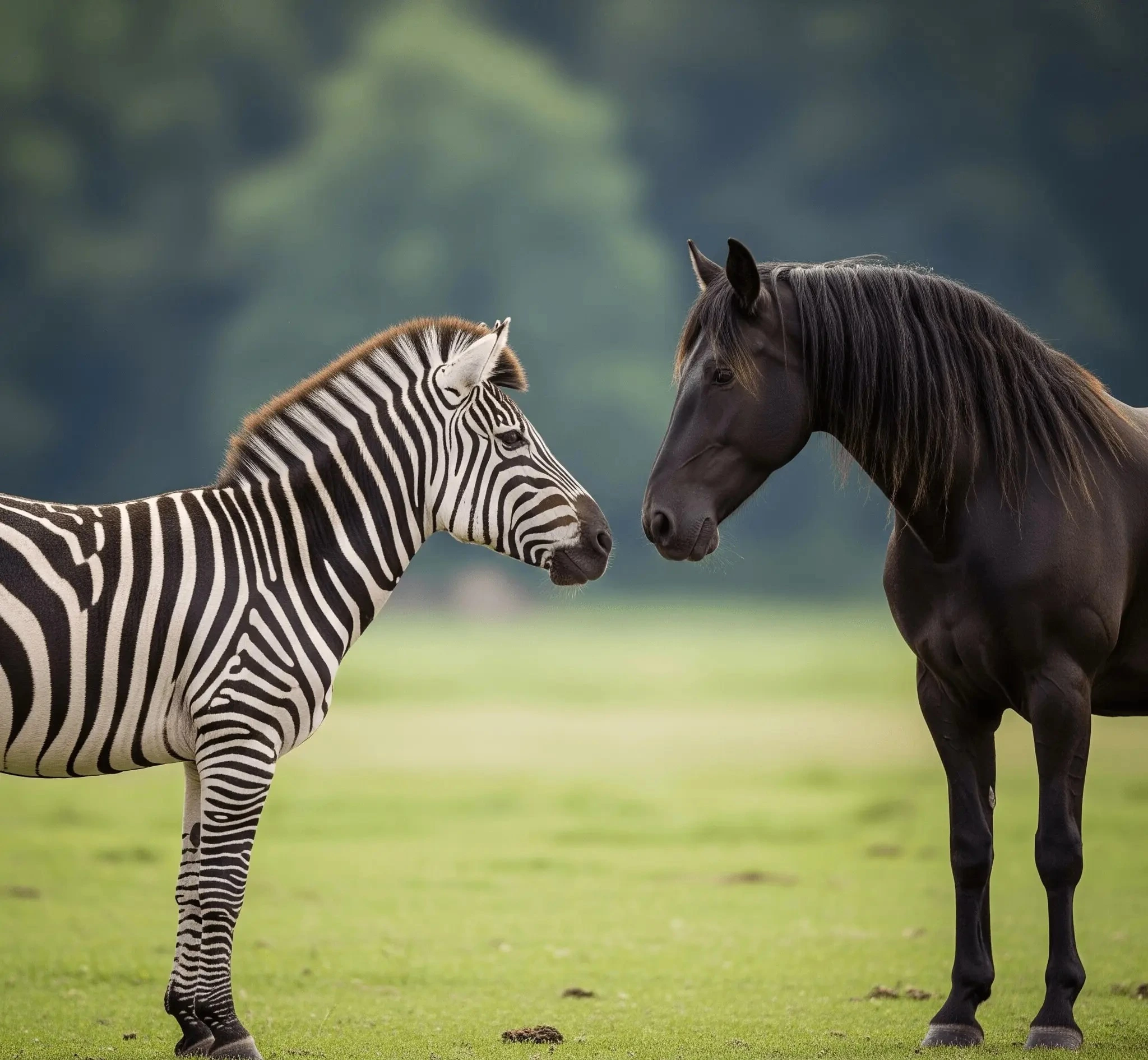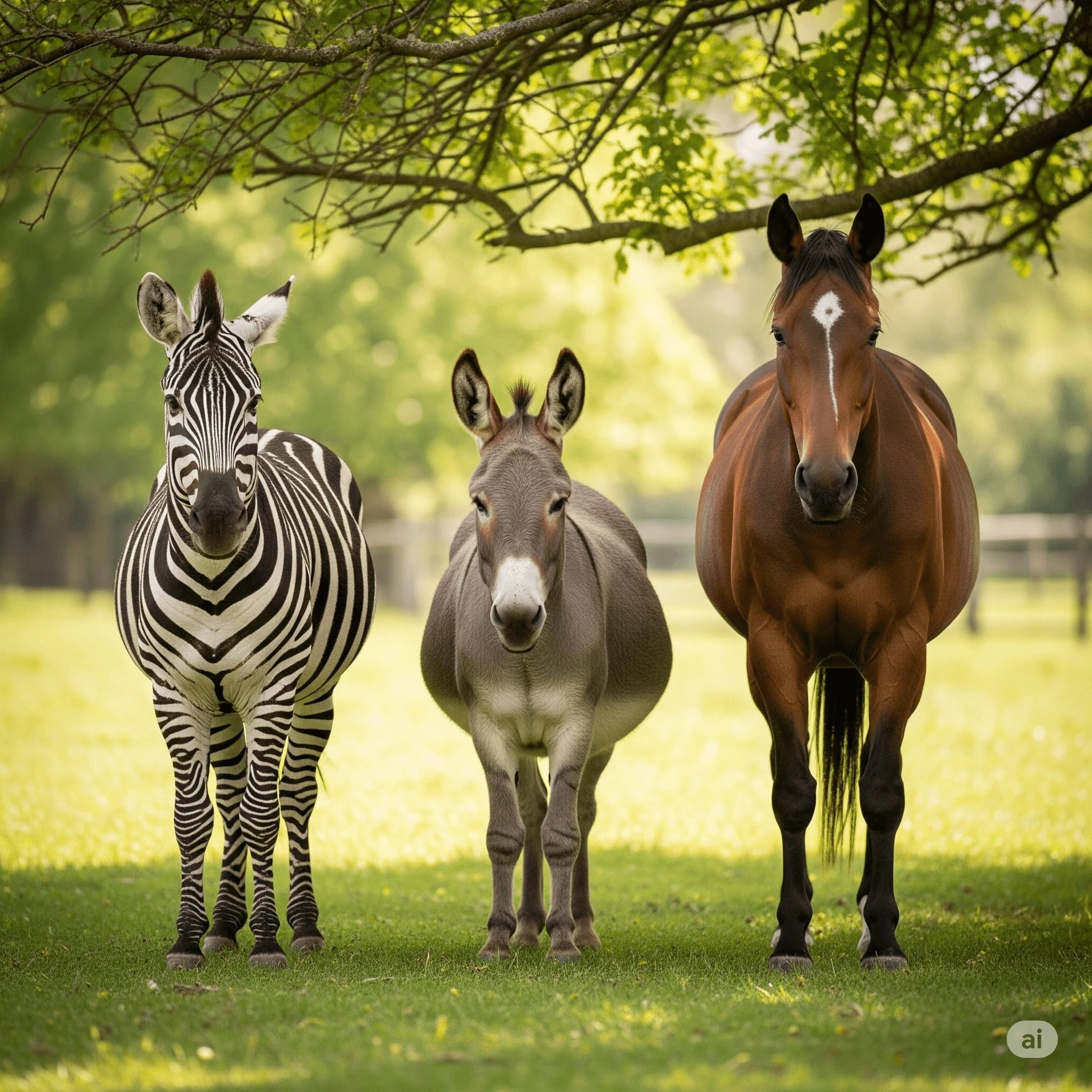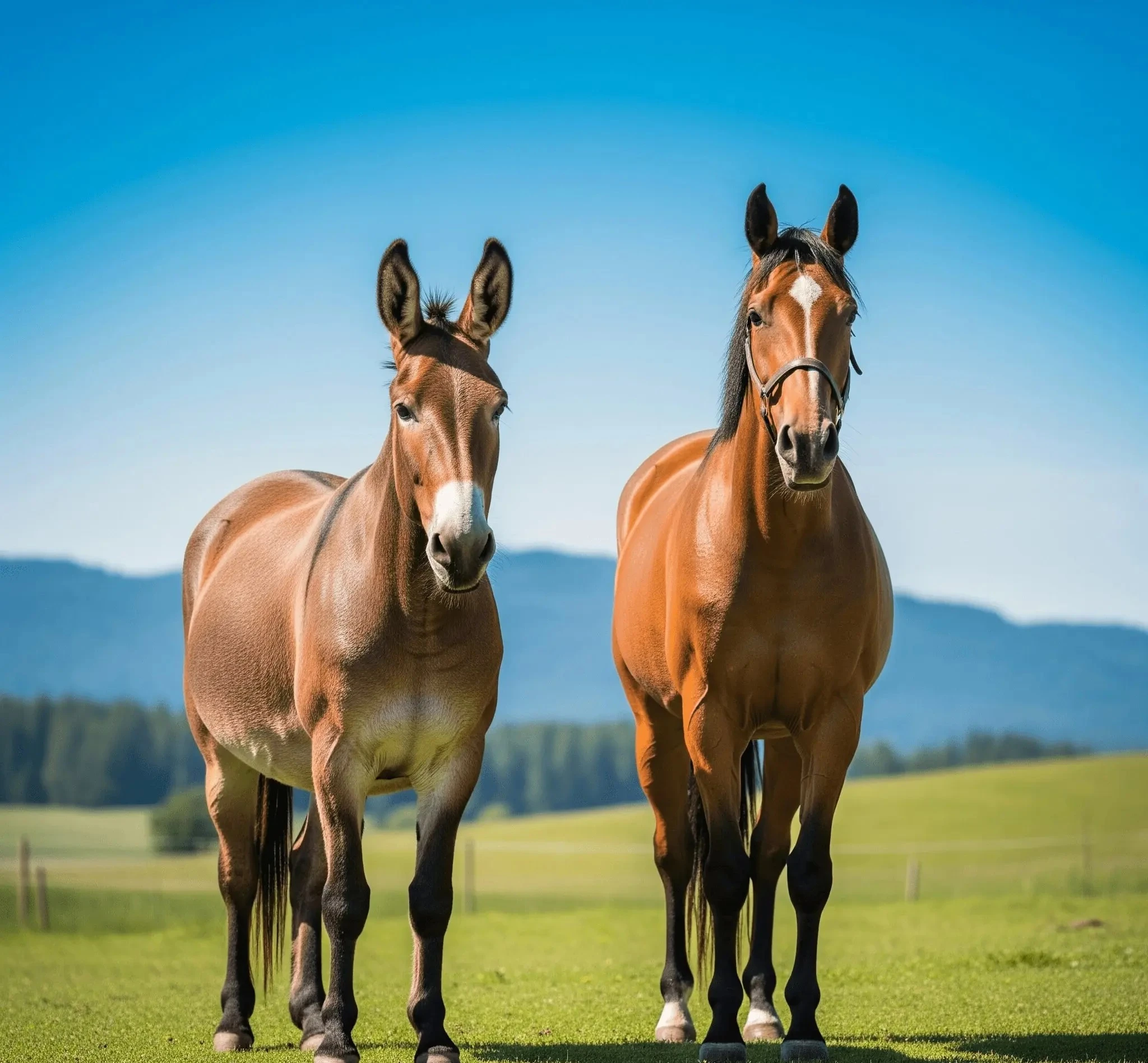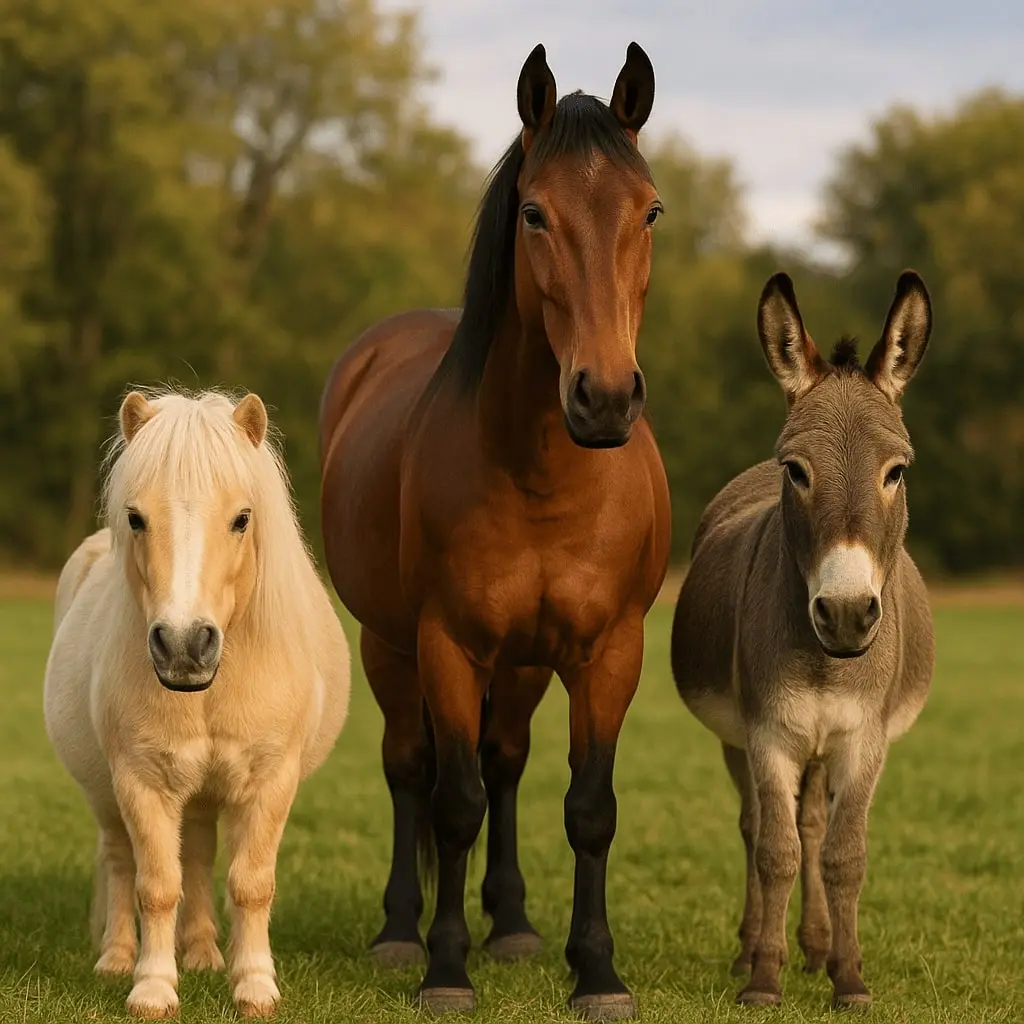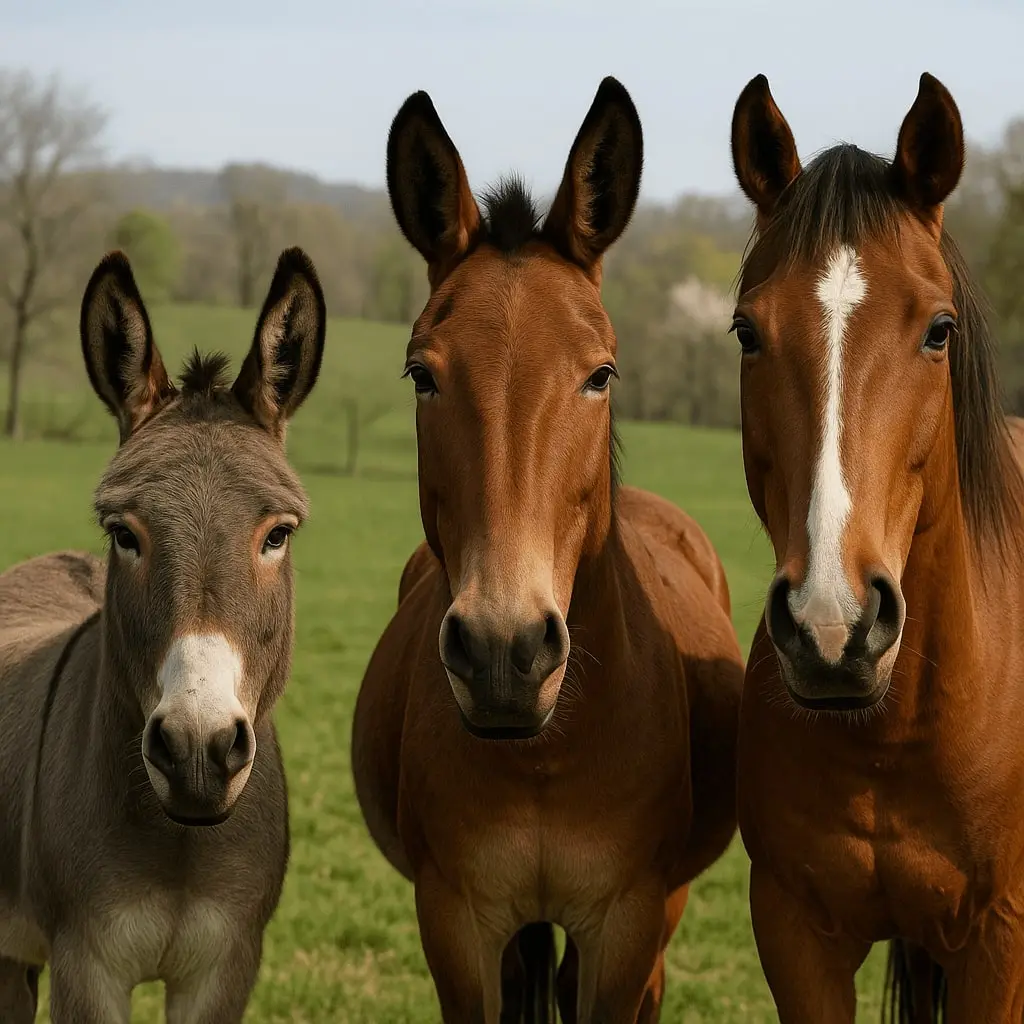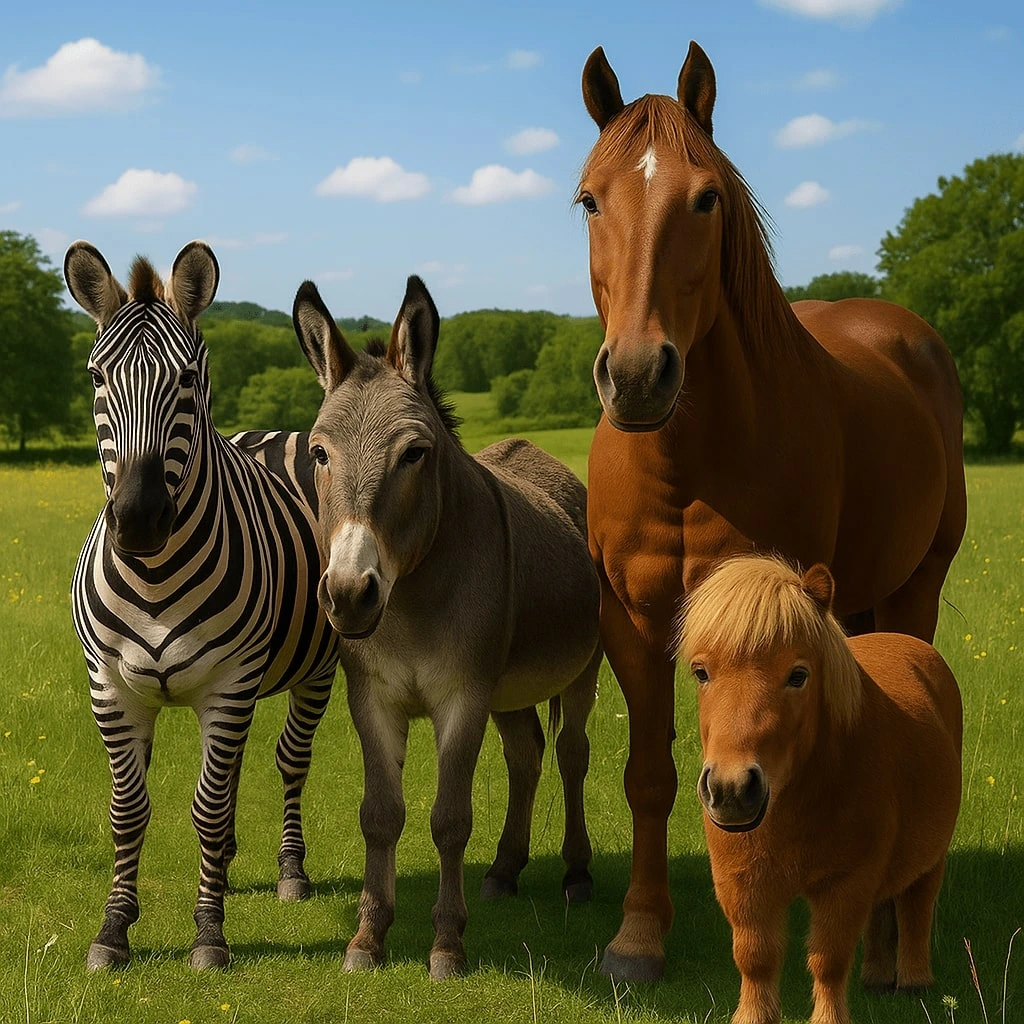At I Heart Horses, we love to explore the wonders of the animal kingdom. Today, we’re diving into the fascinating world of zebras and horses. While they may look similar at first glance, these two animals have many differences. From their stripes to their behavior, zebras and horses each have unique traits. In this blog, we’ll compare their size, speed, and more. We’ll also highlight how they’re alike. Join us as we uncover the distinct features with our blog “zebra vs horse”.
Family Ties: Are Zebras and Horses Related?
Yes, zebras and horses are related. They both belong to the Equidae family, which includes animals like horses, zebras, and donkeys. This family started around 50 million years ago. Back then, their ancestors were small animals with several toes. Over time, they evolved into the animals we know today.
Both zebras and horses are part of the Equus genus. This means they share a closer connection. Even though they look different now, they started from the same group. Horses and zebras have similar body shapes, teeth, and hooves. These features show they have a common past.
Similarities Between Zebra and Horse
Even though they are different, zebras and horses share some similarities
- Hooves: Both have hard hooves that help them run fast.
- Herbivores: They eat plants like grass and hay.
- Social Animals: They live in groups called herds.
- Communication: They use sounds and body language to talk to each other.
These similarities help them survive in the wild.
Zebra vs Horse: What Are the Differences?
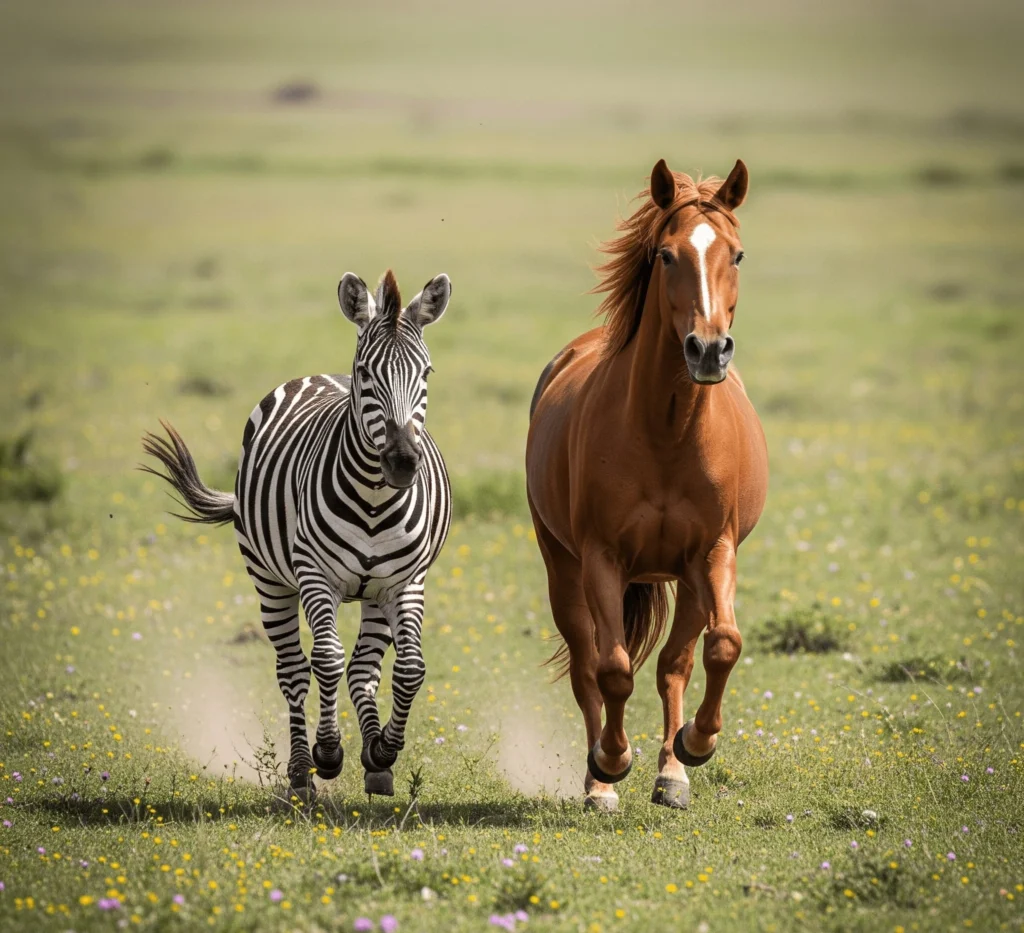
After knowing their family ties and similarities, let’s dive into our main topic that is zebra vs horse:
Size
Horses are generally bigger than zebras. An average horse stands about 5 to 6 feet tall at the shoulder and weighs between 900 to 2,200 pounds. Zebras are smaller, standing about 3.5 to 5 feet tall and weighing between 440 to 990 pounds.
Speed
Horses are faster than zebras. A horse can run up to 55 miles per hour, while a zebra can run up to 40 miles per hour. However, zebras are agile and can make quick turns to escape predators.
Stripes and Colors
Zebras are known for their black and white stripes. Each zebra has a unique pattern, like a fingerprint. Horses come in many colors, such as brown, black, white, and gray. Some horses have spots or patches.
Behavior and Temperament
Horses have been trained by humans for riding and work. They are generally calm and friendly. Zebras are wild animals and can be aggressive. They are not easily tamed and prefer to live in the wild.
Habitat and Domestication
Horses live all over the world, often on farms or ranches. They have been domesticated for thousands of years. Zebras live in the wild, mostly in Africa. They have not been domesticated and are not used for riding or work.
Genetics and Evolution
Zebras and horses share a common ancestor. Over time, they evolved differently. Horses adapted to various environments and became domesticated. Zebras adapted to the African savannas, developing stripes for camouflage and social bonding.
Physical Features
- Ears: Zebras have larger, more rounded ears. Horses have smaller, pointed ears.
- Manes: Zebras have short, erect manes. Horses have longer manes that can fall to one side.
- Tails: Zebras have tufted tails, while horses have long, flowing tails.
Can You Ride a Zebra?
While horses are commonly ridden, zebras are not. Zebras are wild and have a strong flight response. They are not built for riding and can be unpredictable. Therefore, it’s not safe or practical to ride a zebra.
Intelligence and Training
Horses are intelligent and can be trained to perform various tasks. They respond well to human commands and can learn routines. Zebras are intelligent too but are more cautious and less responsive to training.
Breeding and Hybrids
Sometimes, zebras and horses can mate and produce hybrids like a “zorse.” However, these hybrids are usually sterile and cannot reproduce. Such breeding is rare and not common in the wild.
Conservation Status
Some zebra species are endangered due to habitat loss and hunting. Conservation efforts are in place to protect them. Horses are not endangered and are found worldwide.
Summary Table: Zebra vs Horse
| Feature | Zebra | Horse |
| Size | 3.5 to 5 feet tall; 440-990 lbs | 5 to 6 feet tall; 900-2,200 lbs |
| Speed | Up to 40 mph | Up to 55 mph |
| Stripes | Black and white stripes | Solid colors; various patterns |
| Ears | Large and rounded | Smaller and pointed |
| Mane | Short and erect | Long and flowing |
| Tail | Tufted | Long and flowing |
| Temperament | Wild and cautious | Domesticated and trainable |
| Habitat | Wild; Africa | Domesticated; worldwide |
| Domestication | Not domesticated | Domesticated |
| Rideable | No | Yes |
Expert Insights: Understanding the Zebra vs. Horse Debate
While zebras and horses share a common ancestry within the Equidae family, their differences are profound, especially regarding domestication and behavior.
Domestication Challenges
Zoologists highlight that zebras’ temperament makes them challenging to domesticate. Unlike horses, which have been selectively bred for docility and cooperation, zebras retain a strong flight response and can be aggressive when threatened. This innate wariness towards humans makes training and domestication efforts more complex.
Evolutionary Divergence
Both zebras and horses evolved from a common ancestor millions of years ago. However, their evolutionary paths diverged significantly. Horses adapted to diverse environments across the globe, leading to their domestication and integration into human societies. In contrast, zebras remained in the wilds of Africa, developing unique adaptations like their distinctive stripes.
Stripes and Survival
The function of zebra stripes has been a topic of scientific inquiry. One prevailing theory suggests that the stripes help deter blood-sucking flies, such as horseflies, which are less likely to land on striped patterns. This adaptation is particularly beneficial in the African savannas, where such insects are prevalent.
Final Thoughts
Zebras and horses are fascinating creatures with both similarities and differences. Understanding these can help us appreciate the diversity in the animal kingdom. While horses have become companions to humans, zebras remain wild and free.
Frequently Asked Questions (FAQs)
Can zebras be domesticated like horses?
No, zebras are wild animals and are not easily domesticated. They have a strong flight response and can be aggressive.
Horses vs. Zebras: Why Don’t Humans Ride Zebras?
Zebras are wild animals with unpredictable behavior, making them difficult and dangerous to domesticate and ride. Unlike horses, which have been bred for calmness and cooperation over thousands of years, zebras tend to be skittish and can be aggressive. Their strong flight response and resistance to training make them unsuitable for riding.
Could You Ride a Zebra the Same Way You Ride a Horse?
While it’s physically possible to ride a zebra, it’s not advisable. Zebras are not domesticated and often react unpredictably to human interaction. Attempts to ride them can result in injury to both the rider and the animal. Their anatomy and temperament differ significantly from horses, making the experience uncomfortable and unsafe.
Can You Ride a Zebra Like a Horse?
Technically, yes, but it’s not recommended. Zebras are wild animals with strong instincts to flee or defend themselves when threatened. They are not accustomed to human handling and can be aggressive, making them unsuitable for riding like domesticated horses.
Which Came First, the Zebra or the Horse?
Neither came first; both evolved from a common ancestor millions of years ago. Over time, they developed into separate species along different evolutionary paths. Horses adapted to various environments across the world, while zebras evolved in Africa with distinct traits like stripes.

